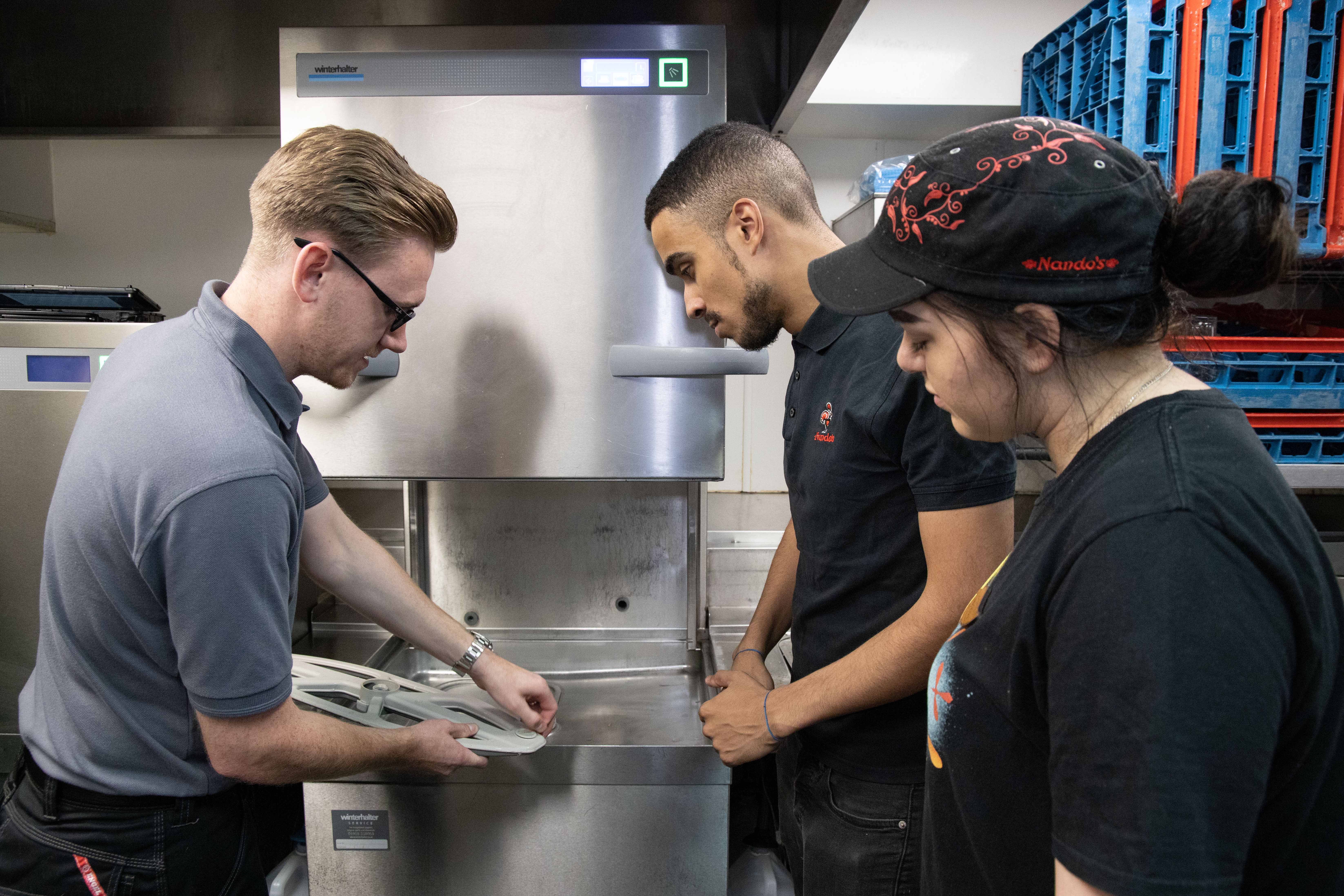Winterhalter data unveils the most common mistakes made by kitchen staff
Winterhalter has unveiled the most common mistakes that kitchen staff make when operating dishwashers and glass washers. The list of ‘top six sins’ is based on findings from data collected by the company’s Connected Wash technology, which monitors operation remotely and can pinpoint when things go wrong – and, often, what it is that’s causing the problem.
What makes these sins worse is that, in every case bar one, the machine will have been displaying a warning error code, which staff ignored or over ruled without doing anything to cure it.
“It underlines the importance of training,” says Kieran Lynch, managing director of Winterhalter’s service division. “Human error is still the most common reason for service call outs. Kitchen staff need to understand that when an appliance is showing an error code, it needs to be acted on right away to avoid damage and, more importantly, to maintain hygienic wash results.”
Here are the Top Six Sins:
- Sin #1: not pre-rinsing plates or glasses, and not cleaning filters. If staff aren’t pre-rinsing, then detritus goes into the machine and clogs up the strainers and blocks the filter cylinder. This can stop wash water getting back to the tank, which not only impacts on wash results but can also damage the machine. If the filters become very badly blocked the machine may think it’s lost its wash water and so will refill the tank. As well as potentially damaging the machine this will slow down operation considerably.
Solution: pre-rinse your dirties and check and clean filters regularly.
- Sin #2: opening the door/hood too early. This happens when staff open the door or hood before the wash cycle is complete, in order to get out plates or glasses more quickly. The key problem here is that, if the rinse cycle hasn’t finished, then the ware may still have detergent on it, resulting in an unhygienic wash. This needs careful monitoring, as there is no warning icon when the door or hood is opened early, although the error is logged by the machine and by Connected Wash.
Solution: wait till the machine has finished the wash cycle completely before opening it. If you’re in a hurry, and your machine has the option, choose a short wash program (but only if the soiling is light).
- Sin #3: a badly loaded rack blocks a wash arm. This happens when an item such as a fork slips out of the rack and blocks the lower wash arm, or an item that’s too big for the machine blocks the upper one. If there are any blockages, the wash arm won’t rotate properly and you’ll get poor results.
Solution: Staff need to check that the racks are properly loaded, especially with large or unusually-shaped dirties.
- Sin #4: running out of salt. If the water softener system runs out of salt and the machine is using untreated hard water to wash, then not only will results be poor but also scale will build up and damage the machine.
Solution: top up the salt regularly. If the machine has self-diagnostics, and tells you to fill up the salt, do it right away.
- Sin #5: running out of detergent. This error is so basic you’d think it couldn’t happen. But the Connected Wash data shows otherwise. In some sites, staff ignore the ‘out of detergent’ warning icon and carry on using the machine. The result is that items aren’t washed properly or hygienically – which is a serious food safety issue, as it could allow the potential transfer of allergens or viruses.
Solution: check and fill detergent as required – especially when the machine tells you to!
- Sin #6: the filter cylinder is missing. Staff sometimes forget to insert the bottom inlet filter after cleaning. Operating the machine without this filter can lead to serious damage, as there is nothing to stop forks, spoons or other debris getting into the wash pump.
Solution: always replace filters after cleaning, and regularly check that they are in position.
In addition, the Connected Wash data highlighted two other areas where efficiencies could be optimised, but where there are no error codes. The first of these is ‘operational readiness’ – this is where machines are turned on long before they are actually used. Connected Wash said the average time wasted this way was 90 minutes – which is a significant amount of wasted energy. The second area involved the self-cleaning program: Connected Wash data showed that, in some sites, this was not being run at the end of each shift. Winterhalter says that the result of not running the program over a period of three or more days would be poor wash results and, ultimately, damage to the machine.
For more information about Winterhalter products:

